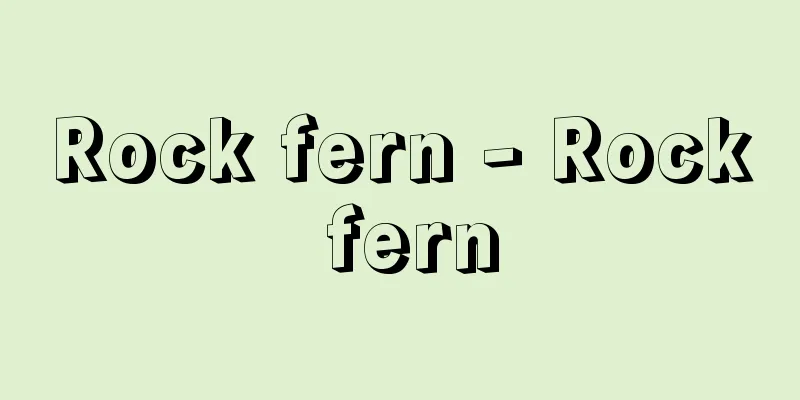Pituitary gland - Pain

|
Also called the pituitary gland, it is an important endocrine gland found in all vertebrates. In humans, the pituitary gland is located in the sella turcica (pituitary fossa) at the base of the brain, and is an oval body measuring 10 mm x 13 mm x 6 mm. The pituitary gland is divided into three parts, the anterior, intermediate, and posterior lobes, each of which secretes a different hormone. Developmentally, the anterior and intermediate lobes originate from the Rathke's pouch of the cutaneous ectoderm (a slit formed by the stretching of the mucosal epithelium of the pharynx that appears during fetal development), while the posterior lobe originates from a protuberance (infundibulum) at the bottom of the third ventricle. These two parts join together to form a single organ called the pituitary gland. For this reason, the anterior and intermediate lobes are collectively called the glandular pituitary gland, and the posterior lobe is called the neurohypophysis. The anterior and intermediate lobe hormones are secreted from the secretory cells of the anterior and intermediate lobes, respectively, while the posterior lobe hormones are synthesized in nerve cells in the hypothalamus, reach the posterior lobe through their axons (long projections emanating from nerve cells), and are secreted directly into the blood from the axon terminals. This type of secretion is called neurosecretion. On the other hand, the cells that secrete the anterior and intermediate lobe hormones are also influenced by the nerve cells of the hypothalamus. In this case, substances synthesized in the nerve cells of the hypothalamus are secreted from the axon terminals into the blood vessels (pituitary portal vein) that perfuse the anterior pituitary gland. Currently, these substances are also considered to be a type of hormone, and are called hypothalamic hormones. The hypothalamic hormones reach the anterior and intermediate lobes and promote or inhibit secretion from the secretory cells in those areas. In this way, the hormone secretion of the pituitary gland is closely related to the hypothalamus, which is the center of the autonomic nervous system. In other words, it can be said that the nervous system and the endocrine system are closely connected. The endocrine system changes its secretion according to the action of the nervous system, but conversely, the secretion of hypothalamic hormones is promoted or inhibited by the influence of pituitary hormones and their subordinate hormones. In other words, the nervous system and the endocrine system work in coordination with each other, and if there is too much of a certain hormone, the secretion is immediately inhibited, and conversely, if there is too little, the secretion is promoted, in a feedback loop. As a result, hormone concentrations are kept constant, and the internal environment is maintained at homeostasis. [Hidenobu Mashima] Pituitary hormonesFirst, the anterior lobe hormones are (1) growth hormone, (2) prolactin (lactogenic hormone), (3) thyroid-stimulating hormone, (4) adrenocorticotropic hormone, and (5) gonadotropic hormones. The gonadotropic hormones include follicle-stimulating hormone and luteinizing hormone, so a total of six hormones are secreted. The intermediate lobe hormone is melanocyte-stimulating hormone. The posterior lobe hormones include oxytocin (uterine contraction hormone) and vasopressin (antidiuretic hormone). In conclusion, at least nine hormones are secreted from the pituitary gland. Of these, four, such as thyroid-stimulating hormone, are superior hormones that stimulate other endocrine glands. For example, thyroid-stimulating hormone stimulates the thyroid gland, but the thyroid gland is also an endocrine organ and secretes thyroxine, a thyroid hormone. Therefore, the pituitary gland is superior among endocrine glands, and it can be said that it controls the secretion of various hormones and the expression of their respective functions. Below, we will discuss each hormone. (1) Growth hormone (GH) is a polypeptide consisting of 191 amino acids, secreted from the alpha cells of the anterior lobe. It promotes bone growth and contributes to height increase. It also has a broad metabolic effect on all tissues other than bone. For example, it increases blood sugar levels, promotes protein synthesis, and mobilizes fat. (2) Prolactin (lactogenic hormone) A polypeptide consisting of 191 amino acids, secreted from the ε (epsilon) cells of the anterior lobe. It promotes milk production. It also promotes the secretion of luteinizing hormone. Its effect on men is unclear. (3) Thyroid-stimulating hormone (TSH) is a glycoprotein with an alpha chain consisting of 96 amino acids and a beta chain consisting of 113 amino acids, and is secreted from the beta cells of the anterior lobe. It stimulates the thyroid gland to promote the secretion of thyroxine. (4) Adrenocorticotropic hormone (ACTH) is a polypeptide consisting of 39 amino acids, the secretory cell of which is uncertain. It stimulates the adrenal cortex to promote the secretion of glucocorticoids. (5) Follicle-stimulating hormone (abbreviated as FSH) is a glycoprotein with an alpha chain consisting of 90 amino acids and a beta chain consisting of 115 amino acids, and is secreted from the delta cells of the anterior lobe. It promotes the development of ovarian follicles and the secretion of estrogen. In men, it stimulates the testes to secrete testosterone and promote spermatogenesis. (6) Luteinizing hormone (abbreviated as LH) is a glycoprotein with an alpha chain consisting of 89 amino acids and a beta chain consisting of 119 amino acids, and is secreted from the delta cells of the anterior lobe. It acts on mature follicles to cause ovulation. It also acts on the corpus luteum to promote the secretion of progesterone. (7) Melanocyte-stimulating hormone (MSH) is a polypeptide consisting of 13 amino acids and is secreted from the intermediate lobe. It expands melanin in melanocytes in the skin, darkening the skin. (8) Oxytocin (uterine contraction hormone) A polypeptide consisting of eight amino acids, secreted from the posterior lobe of the uterus. It causes uterine contraction and expels milk. (9) Vasopressin (antidiuretic hormone, abbreviated ADH) is a polypeptide consisting of eight amino acids and is secreted from the posterior lobe. It increases blood pressure and reduces urine volume by promoting water reabsorption in the renal tubules. [Hidenobu Mashima] Animal pituitary glandIn the jawless vertebrates (lampreys, hagfish, etc.), the lips extend forward from below Rathke's pouch, forming a new cavity. This cavity eventually moves to the front and above the head, and finally the entrance becomes the nostril, and the adenohypophysis develops in the connective tissue at the tip. In other words, the adenohypophysis of the jawless does not develop from the oral cavity structure of other vertebrates, but from the nasopharyngeal mucosa of the nasohypophysis duct. The adenohypophysis of the cartilaginous fishes, which are more evolved than the jawless vertebrates, has a special structure called the ventral lobe, which is a modification of the tubular lobe of tetrapods (also called the tubercle, which is located above the anterior and middle lobes and has a well-developed vascular network). On the other hand, the ray-finned bony fishes do not have a ventral lobe, and the adenohypophysis is divided into the anterior lobe (main lobe), head, anterior lobe tail, and middle lobe. The anterior lobe is divided in the cartilaginous fish, bony fish (holostei, lobe-finned fish), and birds, but not in amphibians, reptiles, or mammals. Birds and some mammals also do not have a middle lobe. The neural lobe of the neurohypophysis (often used synonymously with the posterior lobe) is a collection of neuronal axons with cell bodies in the hypothalamus, where vasopressin, oxytocin, and other hormones are accumulated. In some lower vertebrates, it contains only arginine vasotocin. The median eminence (which is included in the neurohypophysis together with the neural lobe) contains hormones (posterior lobe hormones) in birds, but mainly contains hormones (releasing hormones and inhibitory hormones) that act on cells in the anterior lobe to promote or inhibit the secretion of anterior lobe hormones. In many animals, these hypothalamic hormones are secreted into the vascular system called the pituitary portal vein and transported to the anterior lobe to act, but in animals with an underdeveloped pituitary portal vein, they reach the anterior lobe by diffusion. In ray-finned fish, the median eminence is adjacent to the anterior lobe, so hypothalamic hormones act more directly on the anterior lobe cells. Factors that act on cells in the intermediate lobe are also produced in the hypothalamus. On the other hand, the adenohypophysis secretes various hormones under the action of hypothalamic hormones. Although each hormone is often secreted by a different cell, there are also known cases in which a single cell secretes multiple hormones. [Seiichiro Kawashima] [References] | |©Shogakukan "> Location and secretion pattern of the pituitary gland ©Shogakukan "> Animal pituitary gland Source: Shogakukan Encyclopedia Nipponica About Encyclopedia Nipponica Information | Legend |
|
脳下垂体ともいい、すべての脊椎(せきつい)動物にある重要な内分泌器官。 人間では脳底のトルコ鞍(あん)(下垂体窩(か))の中にあり、大きさは10ミリメートル×13ミリメートル×6ミリメートルほどの楕円(だえん)体である。下垂体は前葉、中葉、後葉の3部に分けられ、それぞれ別のホルモンを分泌しているが、発生学的には、前葉および中葉は皮膚外胚葉(はいよう)のラトケ嚢(のう)(胎生期に現れる、咽頭(いんとう)の粘膜上皮が伸びてできた切れ込み)に由来しているが、後葉は第三脳室底部の隆起(漏斗(ろうと))に由来している。この両者が接合して下垂体という一つの臓器になるわけである。このため、前葉と中葉はまとめて腺(せん)(性)下垂体、後葉は神経(性)下垂体とよばれる。前葉ホルモンおよび中葉ホルモンは、それぞれ、前葉、中葉の分泌細胞から分泌されるが、後葉ホルモンは、視床下部にある神経細胞内で合成され、その軸索(神経細胞から発する長い突起)の中を通って後葉に達し、そこで軸索末端から直接血液中に分泌される。このような分泌様式を神経分泌という。一方、前葉ホルモンや中葉ホルモンを分泌する細胞も、視床下部の神経細胞の影響を受ける。この場合は、視床下部の神経細胞内で合成された物質が、その軸索末端から下垂体前葉を灌流(かんりゅう)する血管(下垂体門脈)中に分泌される。現在、この物質も一種のホルモンと考えられ、視床下部ホルモンとよばれるようになった。視床下部ホルモンは、前葉および中葉に至ってその部位の分泌細胞の分泌を促進したり抑制したりするわけである。このように下垂体のホルモン分泌は、自律神経の中枢である視床下部と密接な関係がある。つまり、神経系と内分泌系とが密に連絡しているということができる。内分泌系は、神経系の作用によって分泌が変化するが、逆に視床下部ホルモンの分泌は、下垂体ホルモンやその下位ホルモンの影響を受けて促進されたり抑制されたりする。すなわち、神経系と内分泌系とは互いに協調し、あるホルモンの分泌が多すぎると、ただちにその分泌を抑制し、逆に少なすぎると分泌を促進するようなフィードバックが働く。その結果、ホルモン濃度は一定に保たれ、内部環境が恒常に保たれることになる。 [真島英信] 下垂体ホルモンまず、前葉ホルモンとして、(1)成長ホルモン、(2)プロラクチン(催乳ホルモン)、(3)甲状腺刺激ホルモン、(4)副腎(ふくじん)皮質刺激ホルモン、(5)性腺刺激ホルモンがあるが、性腺刺激ホルモンには、卵胞刺激ホルモンと黄体形成ホルモンがあるから、合計6種類のホルモンが分泌されていることになる。中葉ホルモンには、メラニン細胞(黒色素胞(こくしきそほう))刺激ホルモンがある。また、後葉ホルモンとしては、オキシトシン(子宮収縮ホルモン)とバゾプレッシン(抗利尿ホルモン)の2種がある。こうしてみると、結局、下垂体からは少なくとも9種類のホルモンが分泌されていることになる。このうち、甲状腺刺激ホルモンなどの4種類は、さらに他の内分泌腺を刺激する上位ホルモンである。たとえば、甲状腺刺激ホルモンは甲状腺を刺激するが、甲状腺も一つの内分泌臓器であって、甲状腺ホルモンであるチロキシンを分泌している。したがって、下垂体は内分泌腺のなかでも上位にあって、種々のホルモン分泌を支配し、それぞれの機能の発現をコントロールしているといえる。以下、それぞれのホルモンについて触れる。 (1)成長ホルモン(略号GH) 191個のアミノ酸からなるポリペプチドで、前葉のα(アルファ)細胞から分泌される。骨の成長を促進し、身長の増加に寄与する。骨以外のすべての組織に対しても広く代謝促進効果を示す。たとえば、血糖値を上昇させ、タンパク合成を促進し、脂肪を動員する。 (2)プロラクチン(催乳ホルモン) 191個のアミノ酸からなるポリペプチドで、前葉のε(イプシロン)細胞から分泌される。乳汁産生を促進する作用がある。そのほか、黄体ホルモンの分泌を促進する。男性への作用は明瞭ではない。 (3)甲状腺刺激ホルモン(略号TSH) 96個のアミノ酸からなるα鎖と、113個のアミノ酸からなるβ(ベータ)鎖をもつ糖タンパクで、前葉のβ細胞から分泌される。甲状腺を刺激してチロキシンの分泌を促進する。 (4)副腎皮質刺激ホルモン(略号ACTH) 39個のアミノ酸からなるポリペプチドで、分泌細胞は不確定である。副腎皮質を刺激して、糖質コルチコイドの分泌を促進する。 (5)卵胞刺激ホルモン(略号FSH) 90個のアミノ酸からなるα鎖と115個のアミノ酸からなるβ鎖をもつ糖タンパクで、前葉のδ細胞(デルタさいぼう)から分泌される。卵胞の発育およびエストロゲン分泌を促進する。男性では睾丸(こうがん)を刺激して、テストステロンの分泌、および精子形成を促進する。 (6)黄体形成ホルモン(略号LH) 89個のアミノ酸からなるα鎖と、119個のアミノ酸からなるβ鎖をもつ糖タンパクで、前葉のδ細胞から分泌される。成熟卵胞に作用して排卵をおこさせる。また、黄体に作用してプロゲステロンの分泌を促進する。 (7)メラニン細胞刺激ホルモン(略号MSH) 13個のアミノ酸からなるポリペプチドで、中葉から分泌される。皮膚のメラニン細胞のメラニンを拡張させ、皮膚の色を黒くする。 (8)オキシトシン(子宮収縮ホルモン) 8個のアミノ酸からなるポリペプチドで、後葉から分泌される。子宮収縮、および乳汁排出作用がある。 (9)バゾプレッシン(抗利尿ホルモン、略号ADH) 8個のアミノ酸からなるポリペプチドで、後葉から分泌される。血圧上昇、および尿細管の水再吸収促進による尿量減少作用をもっている。 [真島英信] 動物の下垂体脊椎動物のうち、無顎(むがく)類(ヤツメウナギ、ヌタウナギなど)では、ラトケ嚢の下方から唇が前方に伸びるため新たな腔所(こうしょ)ができる。この腔はやがて頭部前上方に移動し、最終的には入口は鼻孔となり、先端部の結合組織内に腺性下垂体が生じる。すなわち、無顎類の腺性下垂体は、他の脊椎動物におけるような口陥構造ではなく、鼻下垂体管の鼻咽頭(びいんとう)粘膜から発生する。彼等より進化した軟骨魚類の腺性下垂体には、腹葉とよぶ特殊な構造があるが、この腹葉は四足動物の隆起葉(結節部ともいい、前葉、中葉の上部にあり、血管網が発達している)の変形である。一方、硬骨魚類の条鰭(じょうき)類には腹葉がなく、腺性下垂体は、前葉(主葉)頭部、前葉尾部、中葉に分けられる。軟骨魚類、硬骨魚類の全骨類と総鰭類、鳥類にも前葉に区分があるが、両生類、爬虫(はちゅう)類、哺乳(ほにゅう)類には区分がない。また、鳥類やある種の哺乳類には中葉が存在しない。 神経性下垂体の神経葉(後葉と同義に用いられることが多い)には、視床下部に細胞体のあるニューロン軸索が集合しており、バソプレッシン、オキシトシンなどが蓄積されている。下等脊椎動物ではアルギニンバソトシンしか含まないものもある。正中隆起(神経葉とともに神経性下垂体に含まれる)は、鳥類では神経葉ホルモン(後葉ホルモン)も含むが、おもに前葉の細胞に作用して前葉ホルモンの分泌を促進または抑制するホルモン(放出ホルモンと抑制ホルモン)を含んでいる。これらの視床下部ホルモンが、下垂体門脈という血管系に分泌され、前葉に運ばれて作用する動物が多いが、下垂体門脈の発達していない動物では拡散により前葉に達する。条鰭類では正中隆起が前葉に接しているので、視床下部ホルモンはより直接的に前葉細胞に作用する。中葉の細胞に働く因子も視床下部で産生される。他方、腺性下垂体は、視床下部ホルモンの作用を受けて、さまざまなホルモンを分泌する。それぞれのホルモンは異なる細胞から分泌されることが多いが、複数のホルモンを一つの細胞が分泌する例も知られている。 [川島誠一郎] [参照項目] | |©Shogakukan"> 下垂体の部位と分泌様式 ©Shogakukan"> 動物の下垂体 出典 小学館 日本大百科全書(ニッポニカ)日本大百科全書(ニッポニカ)について 情報 | 凡例 |
Recommend
Koiwai Kiyoshi - Scary Kiyoshi
Social activist. Born in Nagano Prefecture. After...
Hasan Pasha
…[Mune Sugimura]. … *Some of the terminology that...
Gokayama
The name of the area in the southwest of Toyama P...
Aghlab Dynasty - Aghlab
An Islamic dynasty (800-909) that ruled North Afri...
Emil von Behring
Born: March 15, 1854, Hansdorf Died March 31, 1917...
Lady Wei (English spelling)
A calligrapher from the Jin Dynasty in China. Her ...
Arthritis - Arthritis
It is an inflammation of the joints, and is class...
Yoshifumi Kikuchi
1862-1918 A Japanese painter from the Meiji to Ta...
Shiatsu Therapy - Shiatsuryoho
A method of treating illnesses and abnormalities b...
Rallaria (Rallaria) - Rallaria (English spelling) mesite
A general term for birds in the Mesoenatidae famil...
Torch
...The ornamental Tithonia is the Mexican sunflow...
Turning Point
A novel by Keiko Kobayashi. In 1978, it won an hon...
Moniligastridae
...Six or more sand sacs are arranged like beads ...
Genshu Katakura - Genshu Katakura
An obstetrician in the late Edo period. Born in T...
sitting
...While spirit mediumship itself has a very long...




![Oton [1st generation] - Father](/upload/images/67cfd65424832.webp)




